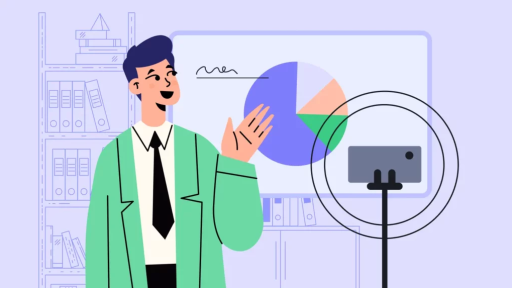Did you know that behind every captivating cartoon lies a secret weapon? This weapon is known as a storyboard.
Wondering what a storyboard is? It is the unsung hero, mapping out the adventure frame by frame. Imagine it as the blueprint guiding your favorite characters through their animated adventures.
In this blog, we will delve into the art of storyboarding, unraveling the mystery behind crafting animated tales that leave a lasting impact.
Storyboarding is not just a technicality. It is the heartbeat of animation, dictating the rhythm of visual narratives.
As we venture into this world, envision yourself witnessing animated dreams, wielding the storyboard as your creative palette.
Table of Contents
How to make a storyboard
Creating a storyboard is a crucial step in visual storytelling.
Here’s a simplified guide to building your storyboard

● Script mark-up
Begin by reviewing your script and jotting down notes. These can range from the overall mood of the scene to specific camera angles and shot types.
This process helps solidify your vision and brings attention to any potential gaps or inconsistencies in your plan.
● Panel illustration (scamping)
The heart of your storyboard lies in drawing scene illustrations, also known as “scamping.”
Spend time crafting visuals for each scene. Even if you don’t have a clear vision initially, this step is crucial for bringing your narrative to life.
● Sequential arrangement and details
Organize your panels in a sequential order, like the pages of a comic book. This arrangement helps assess the flow of your scenes.
Evaluate the logical sense of your scenes and make adjustments or add new ones as needed.
Dive into the details, considering aspects like camera angles, shot types, voiceovers, and any additional relevant information.
Building a storyboard may seem straightforward, but having a strong vision is key. Without it, you risk ending up with disjointed scenes that lack smooth transitions or, even worse, empty panels that don’t seem to fit any sketches.
The tools for storyboarding
Starting with the journey of storyboarding requires the right set of tools.
Before diving into the creative process, let’s explore the essential tools that every growing storyboard artist should have in their arsenal.
We believe a newbie or a skilled professional, both need the right instruments to construct the animated masterpiece.
● Digital or traditional
Whether you prefer the tactile feel of traditional pen and paper or the digital precision of a tablet. Both have their merits; it’s a matter of personal preference.

● Storyboard software
Consider investing in specialized storyboard software such as Plot, FrameForge, or Storyboarder.
These tools streamline the process, allowing you to arrange frames, add notes, and experiment with sequencing effortlessly.
● Reference material
Inspiration can strike at any moment.
Keep a library of reference materials, whether it’s images, sketches, or even snippets from your favorite cartoons. Let these serve as sparks for your creative fire.
● Storyboard templates
Efficiency is key.
Pre-designed storyboard templates can save time and ensure consistency in framing. Think of them as the blueprints for your animated universe.
● Coloring tools
While the focus is on sketching, adding a touch of color to keyframes can enhance visual clarity and convey mood. A few colored markers or a digital color palette can go a long way.
The tools are the building blocks of your animated narrative, laying the foundation for the vibrant worlds you are about to create.
A symphony of frames
Now that we have equipped ourselves with the essential tools, let’s embark on the creative journey of arranging frames.
Imagine each frame as a note in a symphony; it’s not just about the individual pieces but the seamless orchestration of the entire composition.
● Establishing shots
Like a grand overture, begin with establishing shots. These frames set the stage, providing the audience with a visual context for the unfolding story.
Whether it’s a sprawling landscape or a bustling cityscape, let these shots captivate and immerse.

● Character introductions
Your characters deserve the same spotlight your story has. Dedicate frames to introducing each character, emphasizing their unique traits and personalities.
● Action sequences
Every great cartoon has its action-packed moments.
Plan dynamic sequences by breaking down movements into individual frames. Consider the flow and rhythm, ensuring a harmonious progression from one frame to the next.
● Pacing and timing
The tempo of your animated narrative is crucial. Use frames to control pacing.
You can linger on moving moments, accelerate through action, and create a rhythm that keeps the audience engaged.
● Transitions
Smooth transitions are the glue that binds frames together. Whether it’s a simple fade, a dynamic wipe, or a creative use of imagery, transitions guide the viewer from one scene to the next seamlessly.
In essence, storyboarding is the art of visual storytelling. Each frame contributes to the overall composition, much like notes in a musical score.
The arrangement, pacing, and transitions between frames shape the narrative’s emotional resonance, captivating the audience in the symphony of your creation.
Insider tips to elevate your storyboard game
A storyboard molds ideas into visual marvels and breathes life into characters. So, let’s uncover some insider tips.
● Storyboarding is a blueprint, not a masterpiece
Remember, the storyboard is a guide, not a finished work of art. It’s a roadmap that directs the animation process, allowing for creative flexibility during production.

● “Keep it simple, stupid” (K.I.S.S)
Don’t overwhelm your frames with unnecessary details. Focus on conveying the essential elements of the scene. Simplicity ensures clarity, making it easier for animators to translate your vision.
● Storyboard with animation in mind
Think about how each frame will translate into animation. Consider the fluidity of movement, the nuances of expressions, and how the storyboard will evolve into a dynamic visual narrative.
● Use thumbnails for quick drafts
Before diving into detailed frames, create quick thumbnail sketches. These small, rough drafts help you experiment with compositions, ensuring a solid foundation before refining your ideas.
● Play with perspectives
Experiment with different perspectives in your frames.
Play with camera angles to add dynamism and depth to your scenes.
● Inject personality into poses
Characters are the soul of your animation. Infuse personality into their poses and let their body language speak volumes. Whether it’s a heroic stance or a comical slouch, each pose should convey emotion.
● Think beyond static frames
While storyboarding often involves static frames, consider incorporating dynamic elements. Use arrows, lines of action, or even small animations within frames to convey movement and flow.
These tips are the secret sauce that elevates a good storyboard to a great one.
We believe applying these insights will enhance the impact of your animated narrative, making it resonate with your audience.

Key Takeaways
Note the following.
● Embrace the power of simplicity
Your storyboard is the roadmap; keep it clear and concise.
Simplicity ensures that your vision is easily translatable into the final animation.
● Visual storytelling mastery
Focus on conveying emotions, actions, and narrative beats through images.
Each frame should contribute to the overarching visual narrative.
● Collaboration is key
The best storyboards are born from creative teamwork.
Keep an open line of communication with animators and fellow storytellers.
Conclusion
As we conclude our exploration into the art of storyboarding, remember that every great cartoon began with a simple idea translated onto frames.
Your storyboard is the vessel that carries your creative vision into the animated realm.
Storyboarding is not merely a technical process; it’s the alchemy that transforms imagination into animated reality.
Whether you are in your learning phase or an aspiring storyteller, let the storyboard be your canvas. May your animated tales captivate audiences for generations to come.







